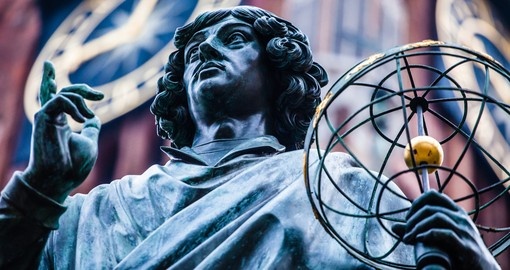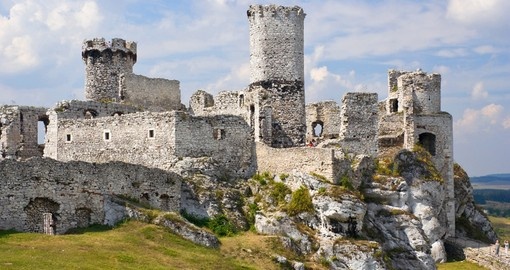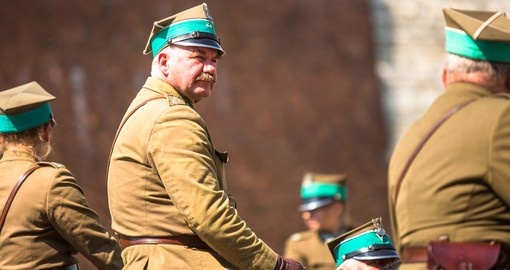Poland History
The Polish landscape has been inhabited since the Stone Age. Pre-Slavic tribes established initial towns and were followed by the Celts, Germanic tribes, and the Baltics. While uncertain of the exact date that the Slavs came to what is now Poland, historians estimate that it was somewhere between the 5th-8th centuries. When these smaller tribes joined together, one of the new, larger tribes, the Polanie, gave Poland its name.
Christianity came to the country in the middle of the 10th century. By the end of the century, many of Poland’s modern borders were established, although these borders would be highly contested in later years. Despite the northern part of the country coming under Germanic military control in the 13th century, the Polish crown was restored in 1320 and the country was unified once more. During this time, Poland experienced great prosperity and growth with several new towns built. In 1364, one of the world’s oldest universities was established in Krakow, the country’s royal capital. The power of the Polish kingdom continued to flourish well into the 16th century. Poland’s culture firmly emerged during this time and it is known as the Polish Renaissance or the Golden Age.
The 17th century witnessed many foreign invaders who divided the country up amongst themselves. This, coupled with rebellions directed at unsatisfactory governments, meant troubling times for Poland. Russia was a key player in the invasions of Poland, becoming more powerful in the 18th century. As a result, Russian tsars flexed their power, becoming the puppet masters of Poland. A decrease in Polish power allowed for an increase in power between Russia, Prussia, and Austria who forced the partition of Poland three times in only 23 years.
Such partitions may have eliminated Poland’s borders, but its culture continued as a result of secret nationalist parties. Although the Congress of Vienna in 1815 established the Kingdom of Poland, the Russian hold over the country was still strong. When war broke out in 1914, there was no formal Polish state and as such, no Polish army. Much fighting took place in Poland and the country suffered a great loss of life. On 11 November 1918, Marshal Józef Pilsudski took control of Warsaw, declaring Polish sovereignty.
The Treaty of Versailles gave some territory to Poland, but the country was still in economic and financial ruin following the First World War. During the 1930s, Poland signed non-aggression pacts with the Soviet Union and Germany. Despite these pacts, the Second World War witnessed a massive attack on Poland in the early stages the war. The Polish people resisted but were no match for the Germans and Hitler who wished to eradicate the population. Many Polish people were sent to camps; others were executed. One of the most notorious German concentration and execution camps, Auschwitz, was built in Poland. As in the First World War, there was nationwide resistance in Poland, however, the end of WWII saw cities, and the country as a whole, left in ruins.
Poland came under Soviet rule after the war, but the fanaticism that Stalin hoped to establish there disappeared after his death. The decades following the war were characterized by economic crises and strikes. The Gdańsk Agreement of 1980 forced Poland’s leading party to accept the demands of those on strike, while workers agreed to recognize the party’s power. From this came the foundation of Solidarity, a nationwide independent trade union. Solidarity quickly became a force to be reckoned with, much to the frustration of the government which decided to ignore many of Solidarity’s proposals.
By December 1981, martial law was put in place and Solidarity was suspended. Strikes were banned, as were public gatherings. Many people were interned and it would be almost four years before political prisoners were freed. When Gorbachev was elected to the Soviet Union, the idea of reform in Eastern Europe was no longer such a foreign idea. The Polish elections of 1989 were semi-free with many Solidarity members gaining representation in parliament. There was a switch to a free market in 1990, but the economy was still in trouble.
With the election of Aleksander Kwaśniewski in the 1990s came many changes for Poland. The country gained NATO membership in 1999 and became part of the European Union in 2004. Following its inclusion in the EU, Poland began to experience more tourism with the number of visitors increasing annually. Historical sites abound throughout the country and the remarkable Polish hospitality awaits those who come here.
Get a Trip Quote Order a Brochure




















